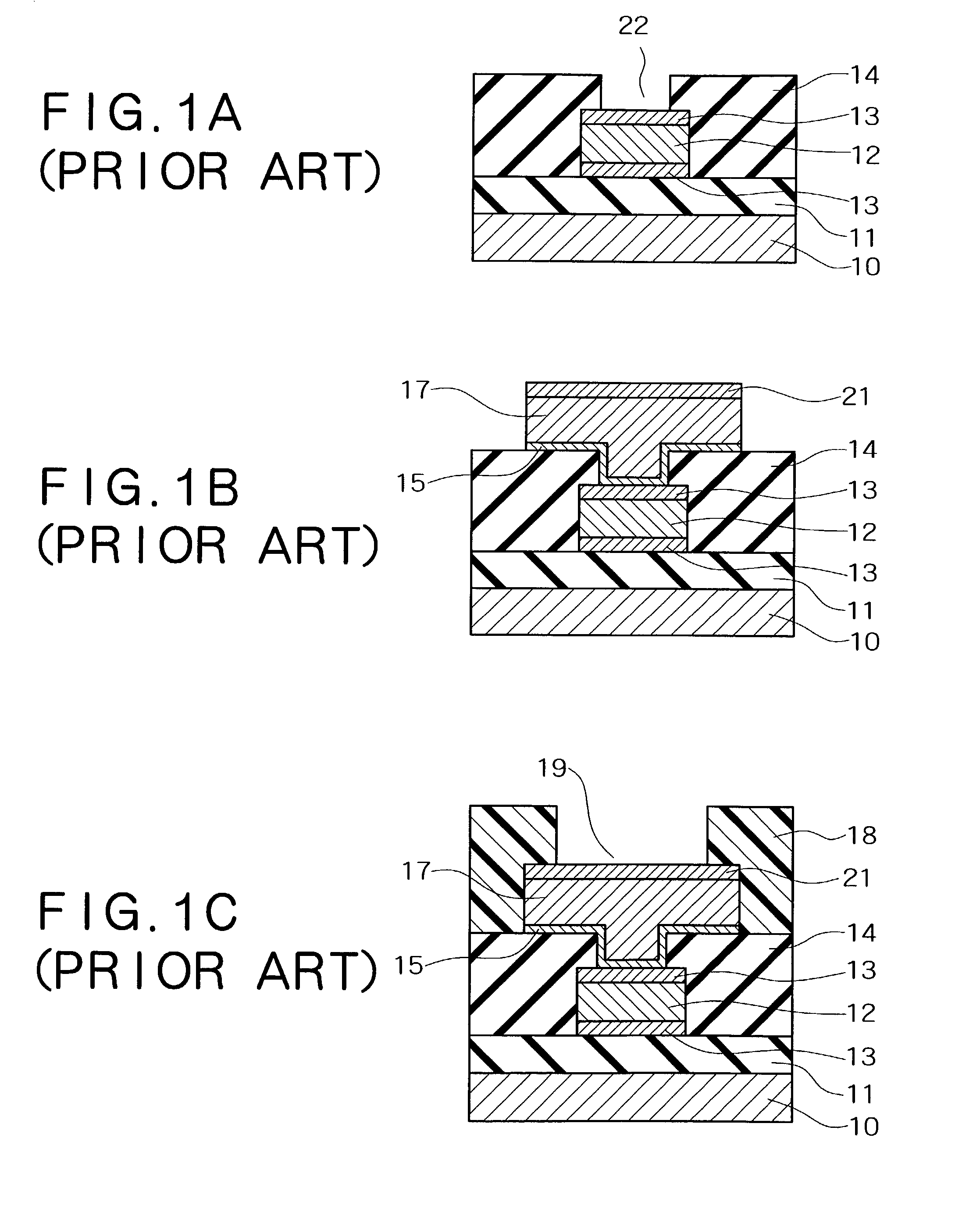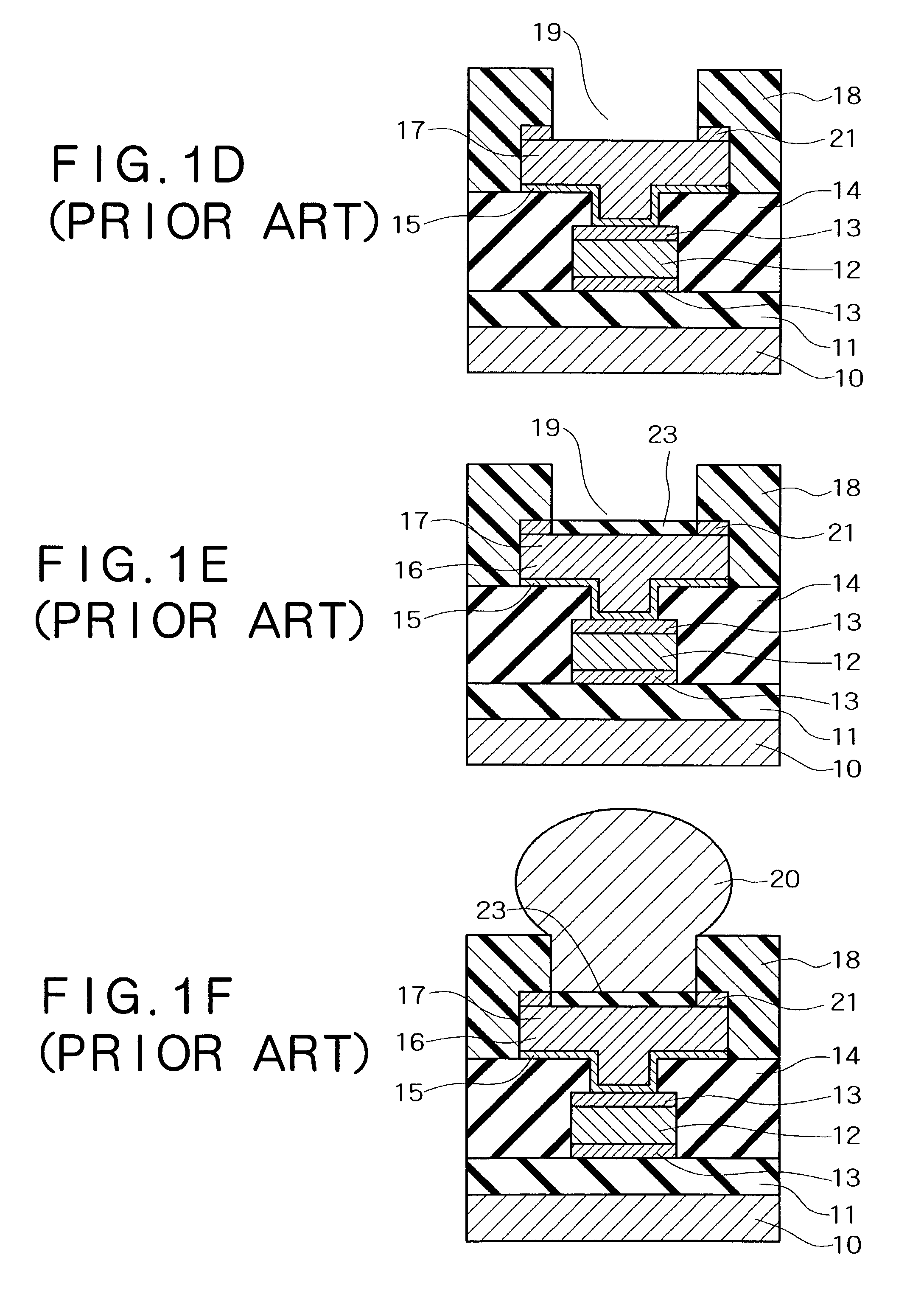Semiconductor device having a roughened surface
a technology of a surface and a surface is applied in the field of semiconductor devices, which can solve the problems of uneven contact resistance between the probe needle and the pad, unstable resistance value, and difficulty in determining the position of the probe, so as to achieve effective removal, improve cleaning performance, and effectively form a chelate complex
- Summary
- Abstract
- Description
- Claims
- Application Information
AI Technical Summary
Benefits of technology
Problems solved by technology
Method used
Image
Examples
example 1
[0067]In the example, results of inspection of electrical characteristics using a bonding pad are compared with each other on the basis of the presence of a treatment solution. In the example, a preliminary structure in which an electrode pad composed of a wiring layer and a copper film are provided on a wafer was produced. Evaluation was carried out after the following treatments were carried out on the electrode pad.
[0068]Test Sample a: Untreated.
[0069]Test Sample b: Treated with a blended solution of dilute sulfuric acid and hydrogen peroxide in order to produce unevenness.
[0070]Test Sample c: Treated with a blended solution of dilute sulfuric acid and hydrogen peroxide in order to produce unevenness and also treated with an oxalic acid water solution.
[0071]The ratio of dilute sulfuric acid and hydrogen peroxide in the blended solution was sulfuric acid:hydrogen peroxide:water=1:1:1000 (in terms of cubic volume). And, the oxalic acid water solution was 0.03% by mass.
[0072]With re...
example 2
[0073]A preliminary structure in which an electrode pad composed of a wiring layer and a copper film are provided on a wafer was produced as in Example 1. After the following treatments were carried out on the electrode pad, solder wettability was evaluated.
[0074]Test Sample 1: Untreated.
[0075]Test Sample 2: Treated with an oxalic acid water solution after being treated with a blended solution of dilute sulfuric acid and hydrogen peroxide in order to produce unevenness.
[0076]Test Sample 3: Treated with an oxalic acid water solution after being treated with a blended solution of dilute sulfuric acid and hydrogen peroxide in order to produce unevenness, and next, anticorrosive treatment was conducted on the surface of the electrode pad by an anticorrosive agent.
[0077]The ratio of dilute sulfuric acid and hydrogen peroxide in the blended solution was sulfuric acid:hydrogen peroxide:water=1:1:1000 (in terms of cubic volume). And, the oxalic acid water solution was 0.03% by mass. A benzo...
example 3
[0079]In the example, processes that are similar to those in FIG. 1A through FIG. 1F and FIG. 2A through FIG. 2D were conducted. At that time, test samples were produced by varying the methods for treatment of the electrode pad surface, and visual recognition of the traces of the probe needle and stability of the contact resistance were evaluated when carrying out the characteristics inspection. The surface treatments of the electrode pad in the respective test samples were as follows:
[0080]Test Sample a: Hydrogen peroxide water treatment was conducted.
[0081]Test Sample b: After hydrogen peroxide water treatment was conducted, a treatment using a blended solution of dilute sulfuric acid and hydrogen peroxide was carried out in order to produce unevenness.
[0082]Test Sample c: After hydrogen peroxide water etching was conducted, a treatment using a blended solution of dilute sulfuric acid and hydrogen peroxide was carried out in order to produce unevenness. Next, still further treatme...
PUM
| Property | Measurement | Unit |
|---|---|---|
| surface roughness Ra | aaaaa | aaaaa |
| thickness | aaaaa | aaaaa |
| surface roughness Ra | aaaaa | aaaaa |
Abstract
Description
Claims
Application Information
 Login to View More
Login to View More - R&D
- Intellectual Property
- Life Sciences
- Materials
- Tech Scout
- Unparalleled Data Quality
- Higher Quality Content
- 60% Fewer Hallucinations
Browse by: Latest US Patents, China's latest patents, Technical Efficacy Thesaurus, Application Domain, Technology Topic, Popular Technical Reports.
© 2025 PatSnap. All rights reserved.Legal|Privacy policy|Modern Slavery Act Transparency Statement|Sitemap|About US| Contact US: help@patsnap.com



